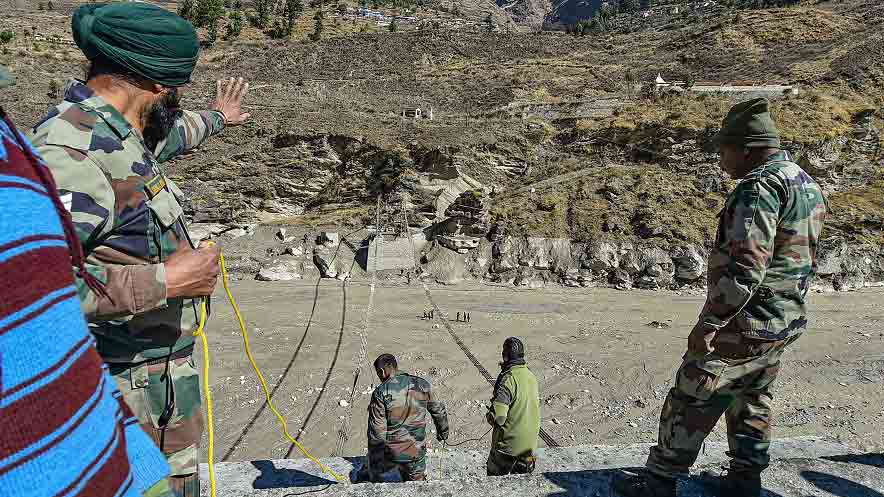The Indo-Tibetan Border Police (ITBP) is planning to set up additional border outposts in sensitive zones along the Line of Actual Control (LAC) in Ladakh and Arunachal Pradesh to increase vigil amid the ongoing border standoff with China in eastern Ladakh since May last year.
“During a recent meeting, senior ITBP officials discussed several measures, including the setting up of additional 50 border outposts in Ladakh and Arunachal Pradesh, along the disputed LAC. They said increasing the border outposts will help in further fortifying the frontier,” sources in the ITBP said.
The ITBP officials, sources said, suggested increasing border outposts and more logistics especially in the zones that had witnessed confrontations with the Chinese army in the past.
The ITBP is the first line of defence along the 3,488km China frontier that runs through Arunachal Pradesh, Sikkim, Uttarakhand, Himachal Pradesh and Ladakh. A large part of the border is disputed and the Indian Army remains behind this first line of defence.
Currently, there are around 200 border outposts of the ITBP along the China frontier.
An ITBP official posted in Ladakh said senior officials were considering increasing the border outposts as soldiers of both the countries often face-off along the disputed border.
“This will certainly help us focus more on sensitive zones from Ladakh to Arunachal Pradesh along the LAC that are prone to border transgression by the Chinese army,” he told The Telegraph.
A latest intelligence report from the ground has also suggested that the Chinese People’s Liberation Army has made frontline formations near some of these sensitive spots and are building infrastructure, including military camps.
Indian and Chinese armies have been locked in a face-off at multiple points in Ladakh since May last year. The border standoffs in Hot Springs and Depsang Plains are continuing even though there has been “partial” disengagements from the Galwan Valley, Pangong Lake and Gogra, by creating a dimilitarised “buffer zone” with the Chinese stepping back a few kilometres while still remaining within India-claimed lines.
Sources in the Union home ministry said the top brass of the ITBP regularly kept on submitting reports to the ministry on the status of current deployment and the ground situation along the frontier.
“Recently, they also submitted a blueprint on fortifying the ITBP to secure the border, highlighting the need for intensifying patrolling in several sensitive zones,” a ministry official said.
Both sides often accuse each other of transgression and intrusion because of differences in perception of the LAC.
In early October this year, Indian and Chinese troops were locked in a “face-off” for a few hours at the Tawang sector in Arunachal Pradesh after nearly 200 Chinese soldiers crossed into the Indian side. A month before 100 Chinese soldiers had transgressed 5km across the LAC in the Barahoti sector of Uttarakhand and damaged a wooden bridge before retreating.
The 90,000-strong ITBP was raised on October 24, 1962, specifically to guard the Chinese frontier after the India-China war.











